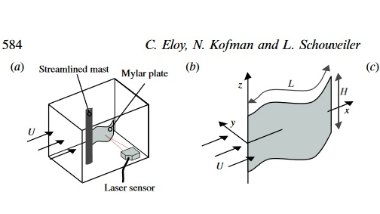The flapping flag instability occurs when a flexible cantilevered plate is immersed in a uniform airflow. To this day, the nonlinear aspects of this aeroelastic instability are largely unknown. In particular, experiments in the literature all report a large hysteresis loop, while the bifurcation in numerical simulations is either supercritical or subcritical with a small hysteresis loop. In this paper, the discrepancy is addressed. First, weakly nonlinear stability analyses are conducted in the slender-body and two-dimensional limits, and, second, new experiments are performed with flat and curved plates. The discrepancy is attributed to inevitable planeity defects of the plates in the experiments.


